A dark, sweet liquor that tastes a little like Jaegermeister, nocino is a traditional Italian liqueur made from unripe walnuts.
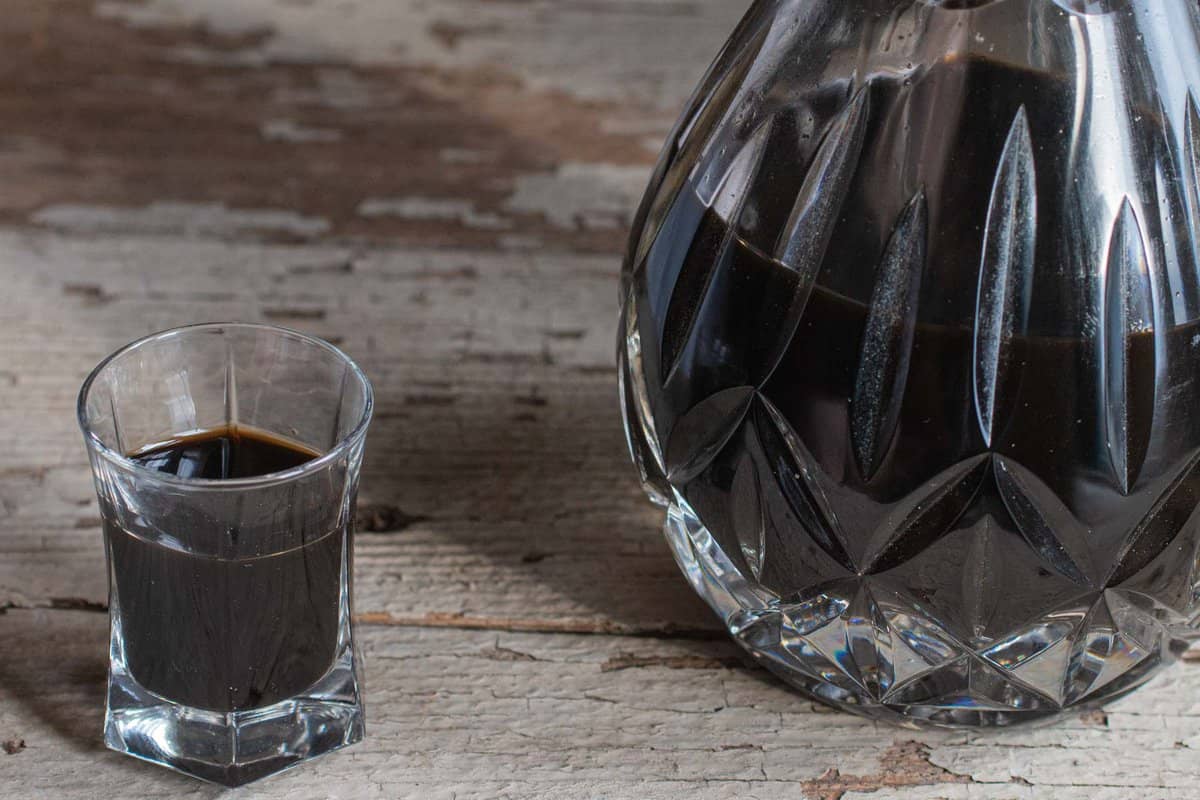
Before I knew a mushroom to pick, before I had ever considered clipping a leafy green to cook from a field, I knew I could pick green walnuts and make nocino.
I don’t remember at exactly what time I picked it up, but it was early in my career while I was working at the old Trattoria da Vinci. I had always been drawn to Italian food, and when I got my first “real” kitchen job in the Twin Cities working for a chef from Rome at Da Vinci's I wanted to do everything like he did.
One day working with him, I got to talking about Nocino, or black walnut liquor. The clearest thing I remember gleaning somewhere along the line was that the nuts should be picked on the day coinciding with a saint, which I put off as some strange Catholic idiosyncrasy.
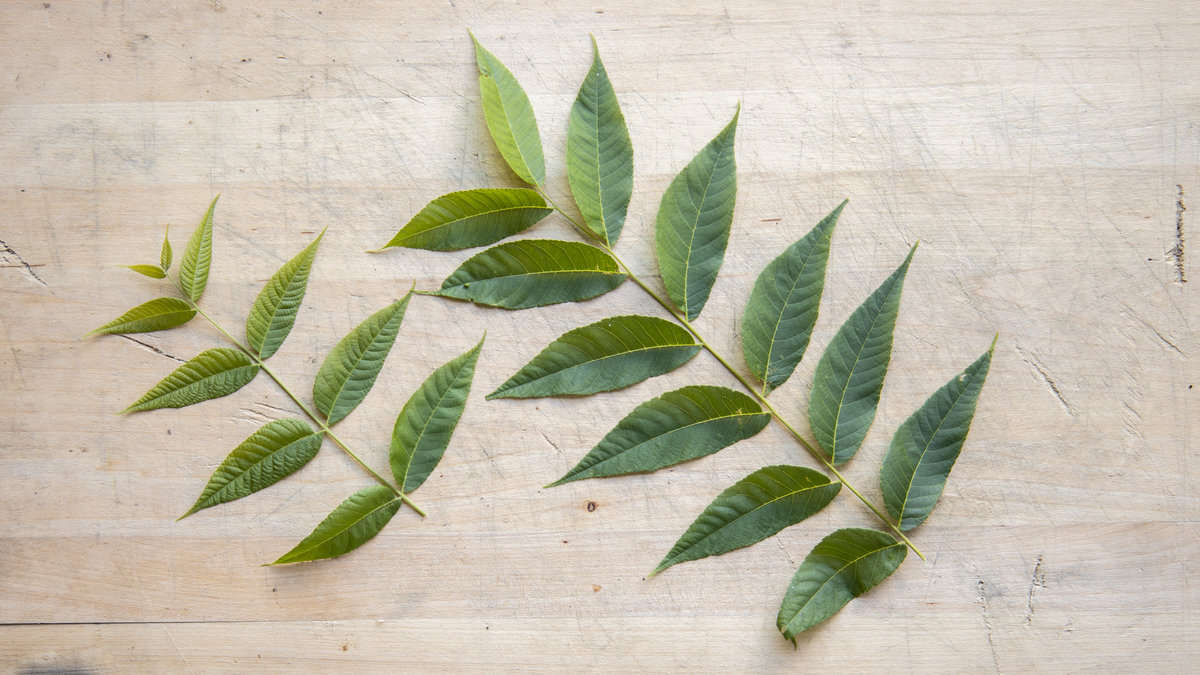
I had to try and make the stuff. I asked around and found out my grandparents had a couple black walnut trees on their property. For my maiden voyage, I went out and picked walnuts off the ground, but I had no idea what I was doing--any walnut would do.
Walnut shells, walnut cores with the green shell removed, brown walnuts, half rotten looking walnuts, they all went into the bag. A couple days later after leaving them outside for lack of fridge space, I ended up with a bag full of writhing maggots, and walnuts.
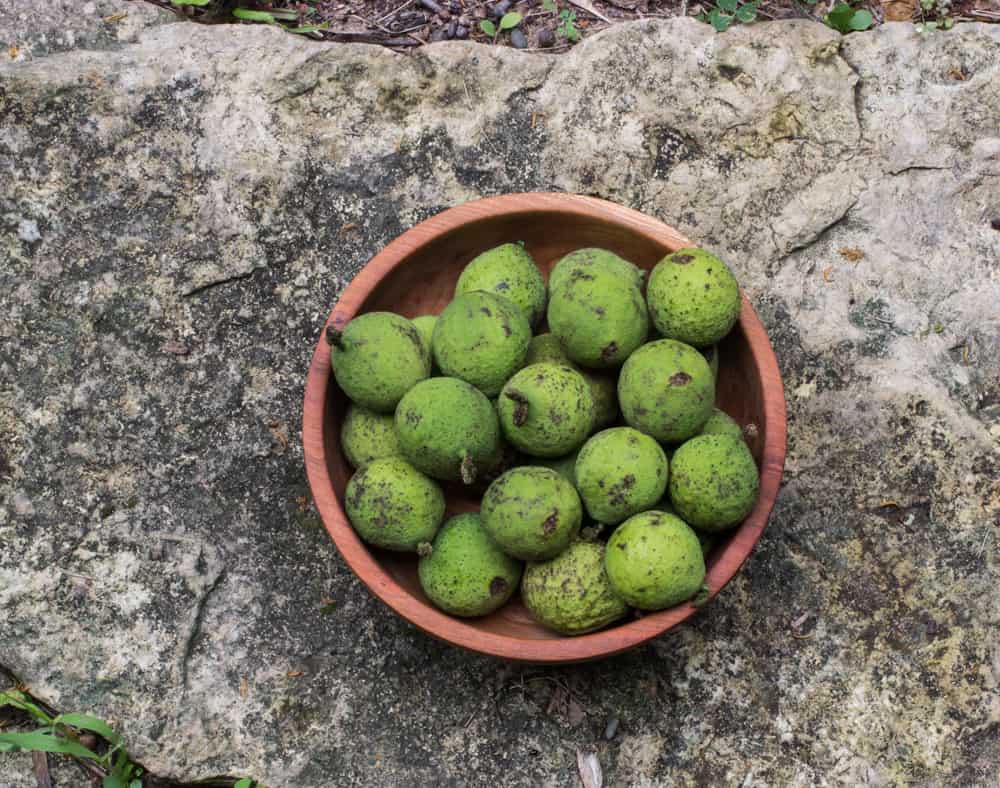
I did a little more research and decided to try and pick the walnuts when they were green, like all the recipes suggested. I tried again, picked all the semi-green walnuts I could find off the ground, and tried to figure out how to break the up.
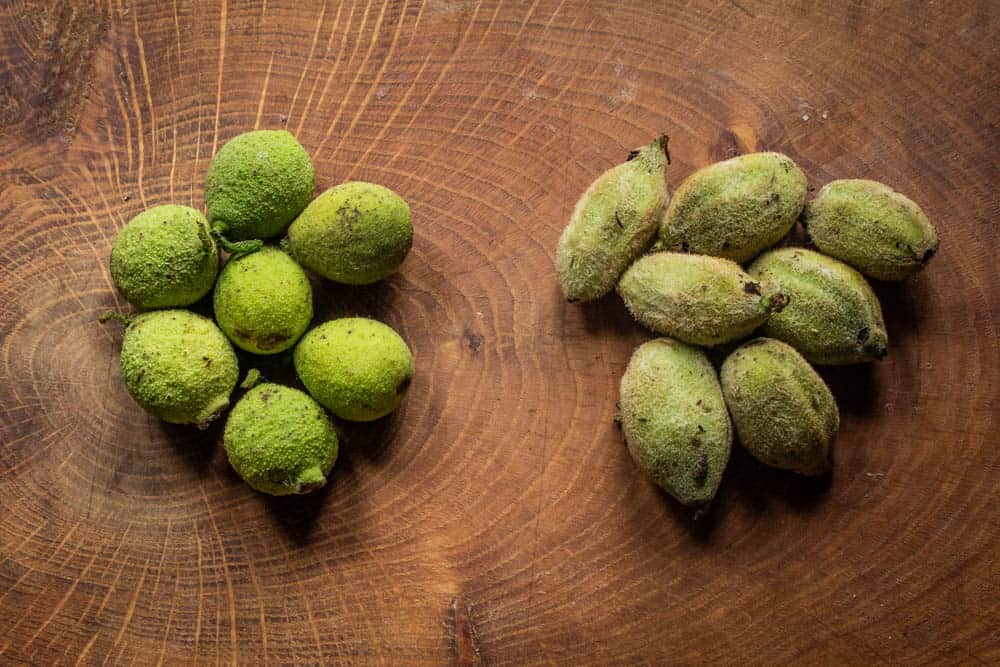
The nuts were just about the hardest thing I’d ever encountered. I brought them into the kitchen at work, thinking there would be some tool available that would work to crack the nuts open.
Fool that I was, I ended up trying to crack open the nuts by beating on them with sauté pans, which only resulted in my throwing away sauté pans I had dented so badly they were completely unusable.
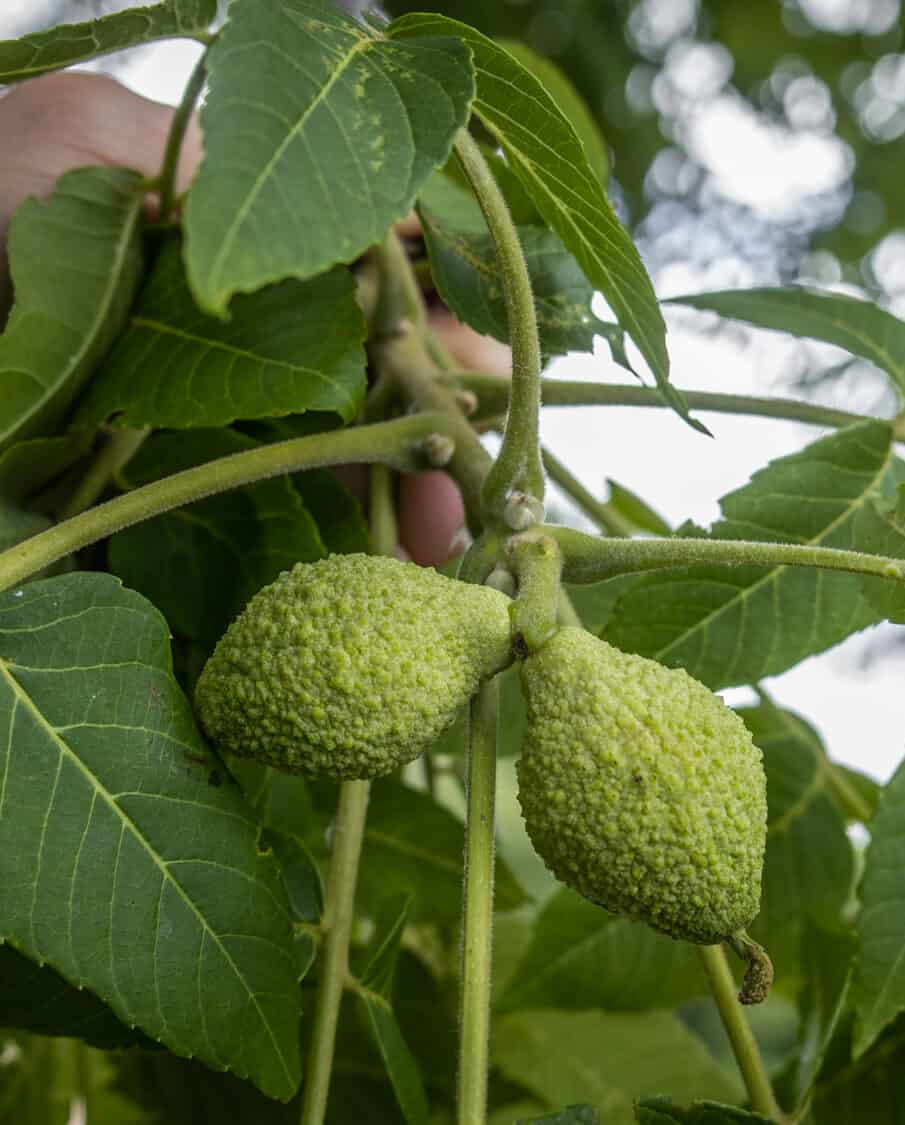
A hammer turned out to be the best bet, after getting a sore thumb from a couple bum whacks I got them cracked, grabbed some vodka and made my nocino.
It turned out ok (sugar makes anything taste good) albeit thick as molasses, a contribution the powdered mature husk gives off if you pick and try to use old nuts, which I don’t recommend.
How young/old should the walnuts be?
In a nutshell, picking the black walnuts on the saint’s day has nothing to do with the saint, but the saint’s day is early in the summer, when the walnuts are soft and the inner shells haven’t developed yet, a paring knife can easily slide through each nut and cutting them is a breeze. I learned my lesson.
As long as you can cut through the green nuts clean with a knife, you will be fine. Even if the nuts have started to form a shell, but the shell is still undeveloped it will still work.
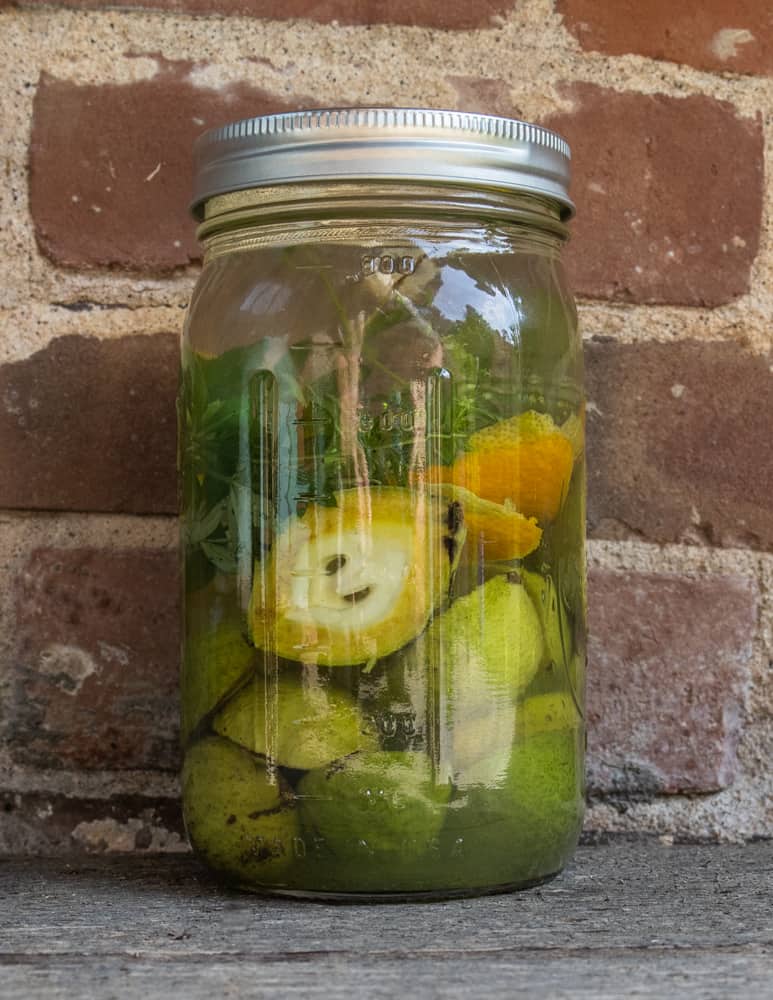
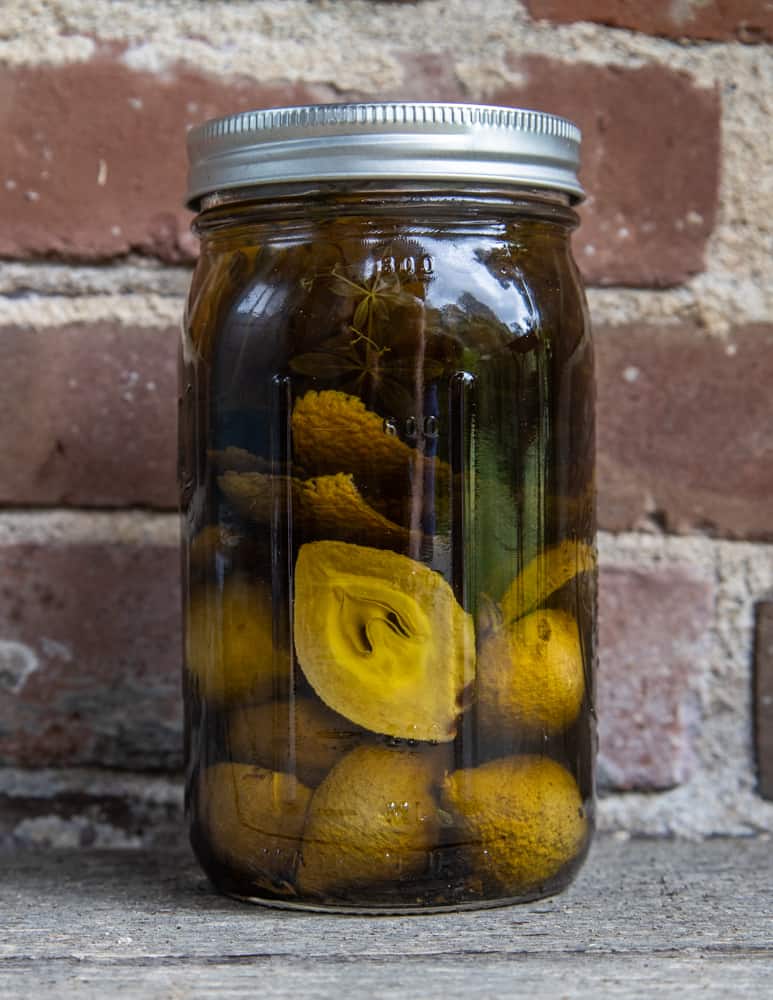
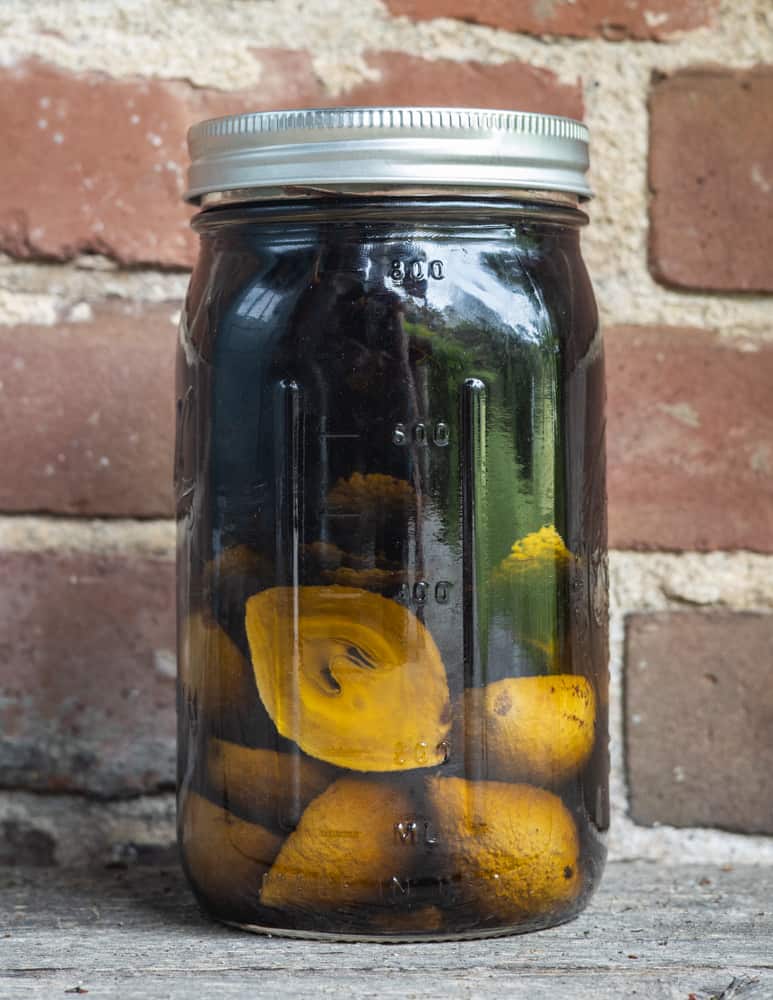
Basic method: the maceration
It couldn't be easier to make nocino, all you need is strong grain alcohol (vodka can work but is not my first choice) and mix it with some unripe nuts, a few very select spices and herbs (or even none at all) put it in a jar, and let it sit for 30 days.
After 30 days, you strain the mixture, thin it and sweeten it a bit (preferably with a tree-based sweetener like maple syrup or my green walnut honey) then bottle it and let it rest for a good 6 months to allow the tannins to soften. That's it!

Spices/additions
As far as the drink itself, the flavor will be different depending on what you put in it, but after making this so many times over the years, I have an important piece of advice for you: DONT GET TOO CREATIVE.
The real character of nocino is in the taste of the nuts themselves, and adding too much cinnamon or strong spices will give you a Christmas-tasting drink.
There is nothing wrong with making nocino with just a few walnuts and a couple cloves, as in 3-4 cloves for a quart jar. Some people add a few coffee beans, which can also be nice.
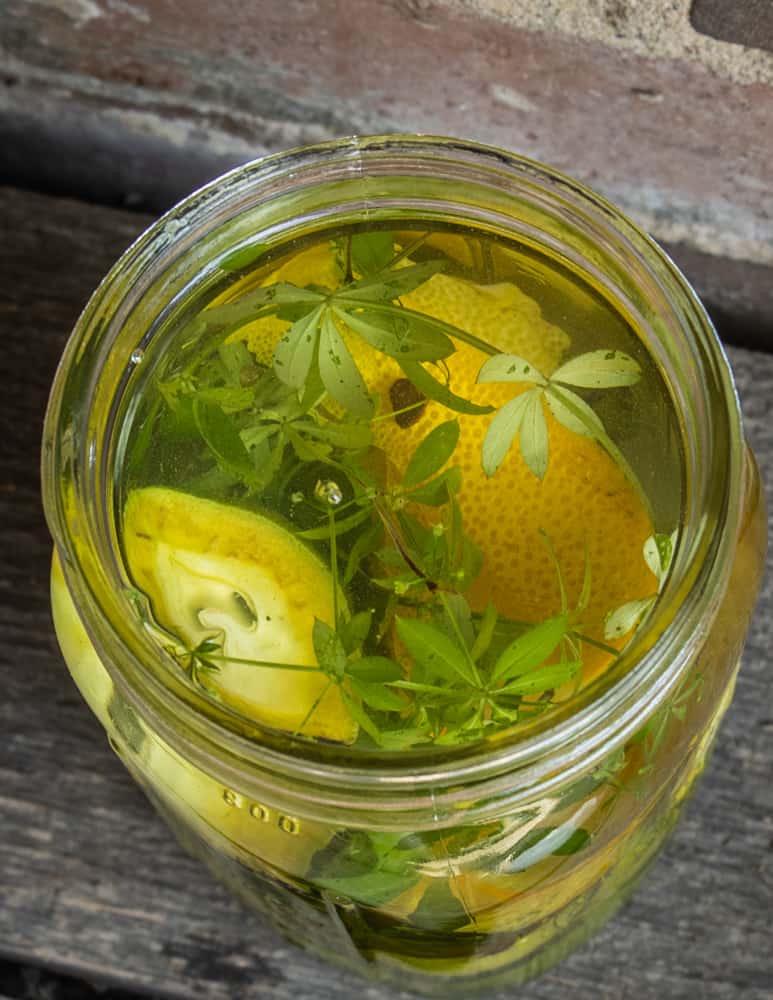
A few leaves of Galium triflorum, or a handful of chopped angelica stem can be excellent additions though. If you're not familiar with Galium triflorum, I describe it in my book, The Forager Chef's Book of Flora. There's also a recipe for Walnut Wine in the book, which I actually prefer to Nocino.

What's it taste like?
In a nutshell it will end up tasting a bit like black jelly beans, a little bit like Jaegermeister, but milder. After you make a few batches, you will begin to notice the particular flavor green walnuts add. It’s so much more though, after aging for a while it’s delicate, and the bitter tannins of the walnuts disappear, revealing a complex flavor underneath.
Like creme de cassis, It’s great drizzled over ice cream or added to mixed drinks, but most of the time I just pull a jar of it out of the freezer and have a little straight up after dinner or before I turn in.
Making it has become a ritual for me, and I’ve become an evangelist of the stuff. In the restaurant I like to have my crystal decanters full of nocino on a little pedestal in the bar, now and then when I talk to a table I like I bring out the bottle, tell them my story and we each have a few sips, it’s a great way to end a meal.
My Nocino is too sweet/too strong
The basic recipe here may be too sweet for some people. Keep in mind this is more of an idea than an exact recipe, and that you can simply add maple syrup, sugar or water to your taste.
If you find the finished product too sweet or too strong when you are mixing it before the final aging, add some more water. Commercial nocino may be thinned by up to 50% or more.
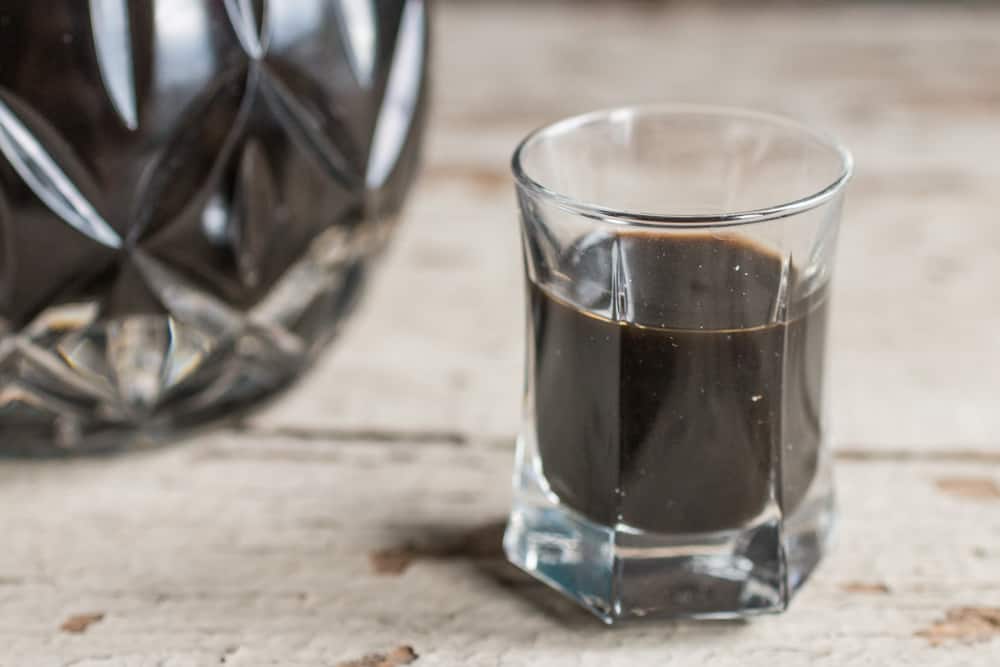
Commercial Nocinos
Over the past few years there's been a steady increase in the interest of Nocino, and now there are a few different distilleries that make it commercially around the United States.
I work with one of those distilleries (Ida Graves from Alexandria) and I harvest about 2-3 hundreds pounds of green walnuts a year for them. Not all nocinos are created equal though, and I've tasted some commercial ones that are too young for my taste. Remember it takes a good 6 months for those tannins to soften!
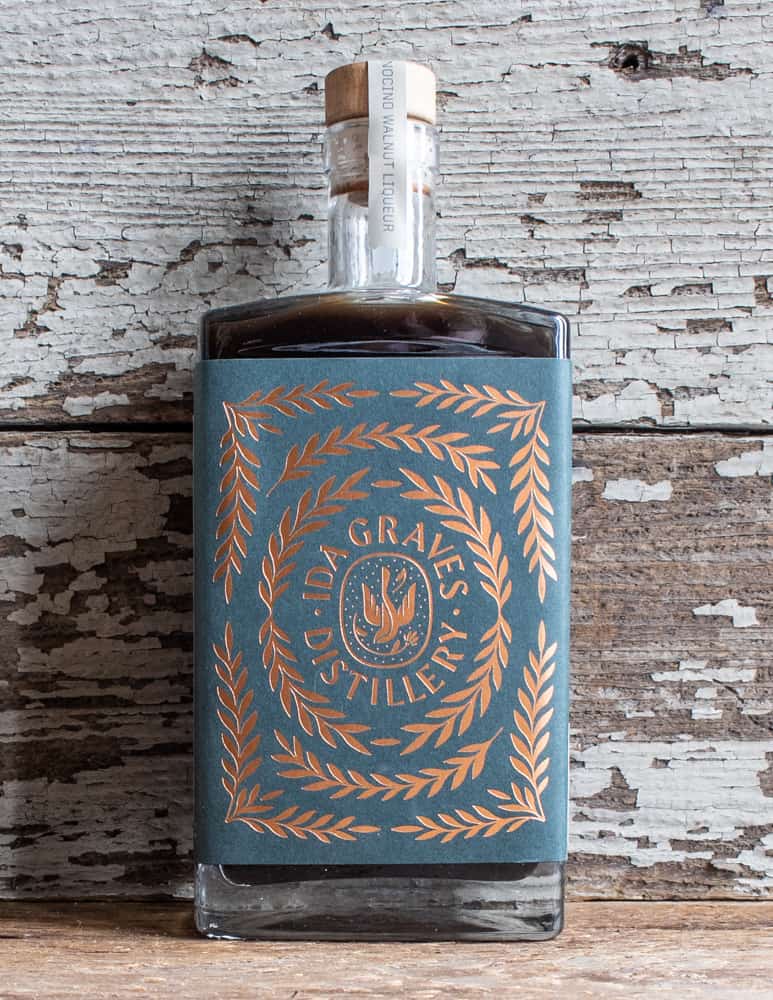
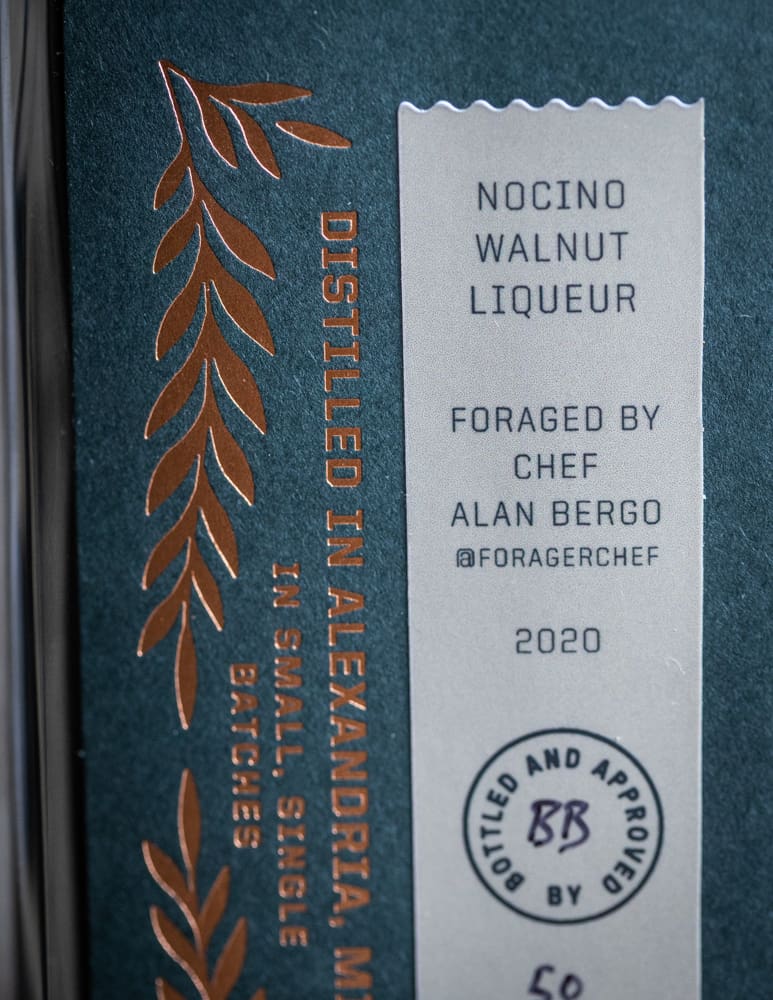
Side note, we're still looking for distribution connections in a few states in the U.S. to help with distributing our product, so if you are in the industry, please reach out to me.
Related Links
Nocino, Black Walnut Liquor
Equipment
- 1 gallon mason jar
- 1 latex gloves
Ingredients
The maceration
- 3 lbs unripe, green black walnuts soft enough that they can be easily cut with a knife
- 1.75 litre (7.4 cups) vodka or substitute everclear, see note
Spices
- 10 whole cloves and/or allspice berries You could omit these and add 2 T good coffee beans instead.
Recommended Additions
- Small handful of Galium triflorum leaves or sweet woodruff Optional, highly recommended
- ½ cup chopped angelica stem or root Optional
Finishing
- 3 cups Maple Syrup or sugar or to taste, see note
- 3 cups Water
Instructions
Maceration
- Wearing gloves, cut the walnuts in half.
- Combine all the ingredients for the maceration (walnuts, alcohol, spices, and other optional additions) in a glass jar or other non-reactive container and allow to infuse for a month in a cool dark place.
Straining
- After the one month maceration, strain the liquid, discard the solids. Strain the liquid through the finest strainer you have. There will be gunk in the bottom and lots of black-mucky looking material. You may need to wash the strainer during the process if it gets gunked up.
Thinning and sweetening
- Add the water. Add the maple syrup or sugar, whisking and tasting until it tastes good to you.
- You may not want all of the syrup. It should be quite strong as this is served in small amounts, but the exact sweetness is up to you. Some people prefer it candy sweet, I like mine less-so. Do not be put off by the strong, tannic taste of the nocino at this point, it will take months for the tannins to soften.
Aging to soften the tannins
- Store the nocino in air tight containers, such as mason jars and allow to mature for at least 6 months. Taste it occasionally and you will notice how the tannins soften over time. I often keep it in the freezer and enjoy it chilled.
- It makes a strong digestif served in a small glass after dinner.

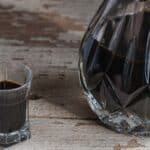
Lara Manetta
I live in a town with dozens of pecan trees, so I gathered some green ones last summer to try them in nocino. I couldn't find any reports of success online, but figured I was out some cheap vodka if it didn't work.
It took many months for the tannins to age out, but I gave the liqueur a try last week. It is excellent!
Figured you'd appreciate a report on a regional variation. I'm going to make this a yearly thing.
Alan Bergo
Thanks Lara.
Patrick Costello
This is amazing. I just bought a property with two mature black walnuts that rain nuts. Question: When you say substitute with whole coffee beans do you mean roasted beans or green beans? And is there a specific type or roast that your prefer or do it not matter?
Alan Bergo
Just a few espresso beans, coffee beans or whatever is easily available. Not green coffee beans, you need to think of the lowest common denominator here.
Annalyn
I made some this year for the first time and it smells like ripe bananas! Excited for the development of flavors. Is there any project you can think of doing with the macerated nuts after removal? There are so many, I hesitate to throw them away.
Alan Bergo
That's fun. Are you sure you used black walnuts and not butternuts? No, don't try to save the nuts, they're free, they're everywhere, and they already gave their goodness to the nocino. If you try to save all the things you'll drive yourself nuts.
Grace antonini
Hey! So, just strained the macerating black walnuts. I had added coffee beans at the start, too. The smell is a little funky. Not actually putting an alarm off in terms of mold or whatnot but it's such a dark liquid it makes me a little hesitant, since I can't see much but the dark haha. Is the slightly funky smell to be expected? What's the margin of mold error when it comes to steeping wild things in vodka? I did take three rocks from the river and scrub and boil them for hours, they were my weights. Any insight? I only have you to ask 😂
Alan Bergo
It's always a dark liquid, but harvesting older green walnuts can make it very dark, and cause it to take longer for the tannins to age out. Mold is impossible, this recipe is like pickling something in straight vinegar.
Dave
Alan,
I started my nocino and I forgot about it. It’s been probably a few months soaking. Can I still use it or will it be too strong?
Alan Bergo
Strain it and forget about it again 🙂
David
Yay thanks!!!
Alan Bergo
Just don't expect it to be ready in 6 months. You'll need to have some patience.
David
Oh I made pine cone syrup. Is it ok to use that as sweetener? It’s really good
Alan Bergo
Yes that's fine. It will be different, but still good.
Sid
is there anything you would change about the recipe when using butternuts? you mention on another page that they're less tannic than walnuts, so would that cut down on the time needed for aging? thanks in advance
Alan Bergo
Hi Sid, I think you may be confusing my comments about butternut nutmeats taken from shells that have been cured and cracked. In nocino, and other infused liquors that use unripe walnuts you're using the entire unripe, green nut, before the nut or shell has started to form. In the green stage, butternuts will have just as many tannins as green black walnuts.
Alexandra
Hi Alan,
I plan to make this with coffee beans. For additions, would vanilla bean work instead of galium triflorum? And if so, how much would you suggest using for your recipe above?
Thank you!
Alexandra
Alan Bergo
Vanilla bean is fine. I'd use a leftover spent bean that's had its seeds scraped out.
Alexandra
Thank you! Would it be ok to open the jar up and add it a few days or a week into in the maceration process (so I have time to figure out a initial use for the vanilla bean first?). Wondering if this could cause a contamination issue or maybe issue related to air exposure. Thanks!!
Alan Bergo
We’re working with alcohol here so contamination is a non-issue. Add it when you have time, without worrying.
Alexandra
Thank you!!
Andrew Sparling
Hello, I would love to try this, but have read that black walnuts are poisonous. Is this true?
Thanks so much
Alan Bergo
No.
Mimi
For the aging, does the nocino have to be kept cold like in the fridge or freezer? Or return to the cool dark place is ok?
Alan Bergo
No it doesn't but you could do it either way. It will age the tannins out faster at room temperature.
Mimi
Thank you!
Thomas Carmichael
I have seen recipes saying that after the initial stage of loading walnuts, vodka, and spices into a jar, the jars should be given time in the sunlight, and others that they should immediately go into a dark, cool space for a month (or so). Your thoughts?
Alan Bergo
It's generally held that light is not good for liquids in bottles, which is why so many alcohols are stored in dark glass. I keep mine in a pantry.
Eva
Hi! I just found a big bottle od whiskey. What do you think? Can I use it instead of vodka? .-) Thanks!
Alan Bergo
That will give it a very different flavor. You need to save that for Wild Cherry Whiskey, it's an old recipe I pulled from the journals of Lewis and Clark.
Samantha
I made nocino using three different recipes. I used green Chandler walnuts from California and vodka. All three recipes taste horribly medicinal. I’ve let them sit for three years with little improvement. Where did I go wrong?
Alan Bergo
I've never used green chandler walnuts. I've only used Juglans nigra. Are you sweetening it?
Ruben J Arellano
FYI. Sweet woodruff is actually Galium odoratum.
Alan Bergo
I’m aware. G. Triflorum is actually stronger than than G. odoratum.
Sherri
Will sweet woodruff still work well? I have it in my yard - and the black walnuts!
Would you add the sweet woodruff with the coffee beans too? Seems like they would work well together.
Alan Bergo
Yes coffee and vanilla love each other. Fine to use woodruff.
Angela
Well, i have my first batch going and it looks so pretty! I waited all year to do this as I missed the walnuts last season! My husband decided we had nothing to lose but half a bottle of his least favorite bourbon, and we made a quart using that bourbon instead of vodka. Used only the coffee beans and sweet woodruff. May be awful, may be not bad.
Alan Bergo
It will be fine. Just remember to strain it after 30 days and allow plenty of time to age out the tannins.
Becky Steiner
May I use honey as the sweetener instead of maple syrup or sugar?
Alan Bergo
Yes that will make a great version.
Jeannie
This is my second year making nocino. The batch I made last year by macerating unripe black walnuts, spices, and sugar in vodka for about a month before straining and aging smells bad! Not sure what went south. I will hang on to that regardless and see if it improves any with age. This year I used 151 proof grain alcohol, lighter spices, macerated for 40 days, and it smells amazing! I also made a batch with Manchurian walnuts, 151 proof grain alcohol, nothing else and that smells nice too. Does the sweetener have to be added before the 6 month aging? I'm thinking I could flavor small batches of simple syrup to add just before serving. That way I could easily experiment with different herb and spice combinations especially on the Manchurian walnut maceration where no herbs and spices were added.
Laura
I have some cultivated celery going to seed— could this be an OK sub for Angelica?
Alan Bergo
No. Don't worry about the angelica.
George
Hi Chef. I am making some 30 liters of nocillo for the first time, from some 100 year old black walnut trees on my property. I see references to using young leaves for it's own type of nocino. Would you suggest adding some sapling leaves to the green walnut batches? These leaves are wonderfully aromatic.
Alan Bergo
Some old recipes use leaves, but they are not at the stage you want them at right now. They must be young, bright green and tender to be aromatic.
Tracy Peterson
My supervisor recently gave me and others at our firehouse a bottle of limoncello that he made. I want to return the favor by making this recipe. We have a huge black Walnut tree on our property and usually toss them out. We used to harvest them and use a table vice to break open the extremely hard shell because our thumbs couldn't stand any more pain from the hammer method. This looks like a fantastic recipe for the black walnuts that we deal with every year and I'm sure that our captain will love it.
Jake Robinson
I'm a beekeeper and often make kombucha and make it with honey - I prefer it over sugar. So, have you tried Honey as a sweetener or have you had feedback from those who have? Cheers
Alan Bergo
Totally fine to use honey as a sweetener here. FWIW though, I never use it in clear infusions as honey makes a cloudy, grew finished product-not a big deal here as the finished product is black.